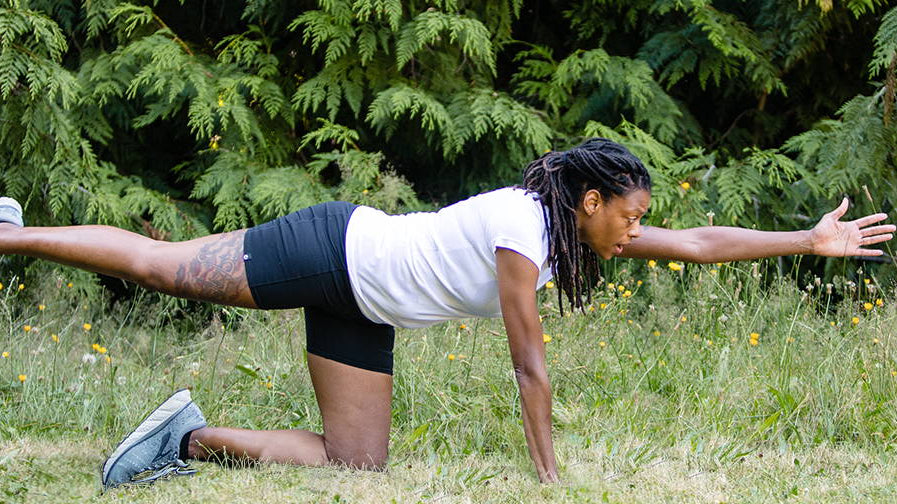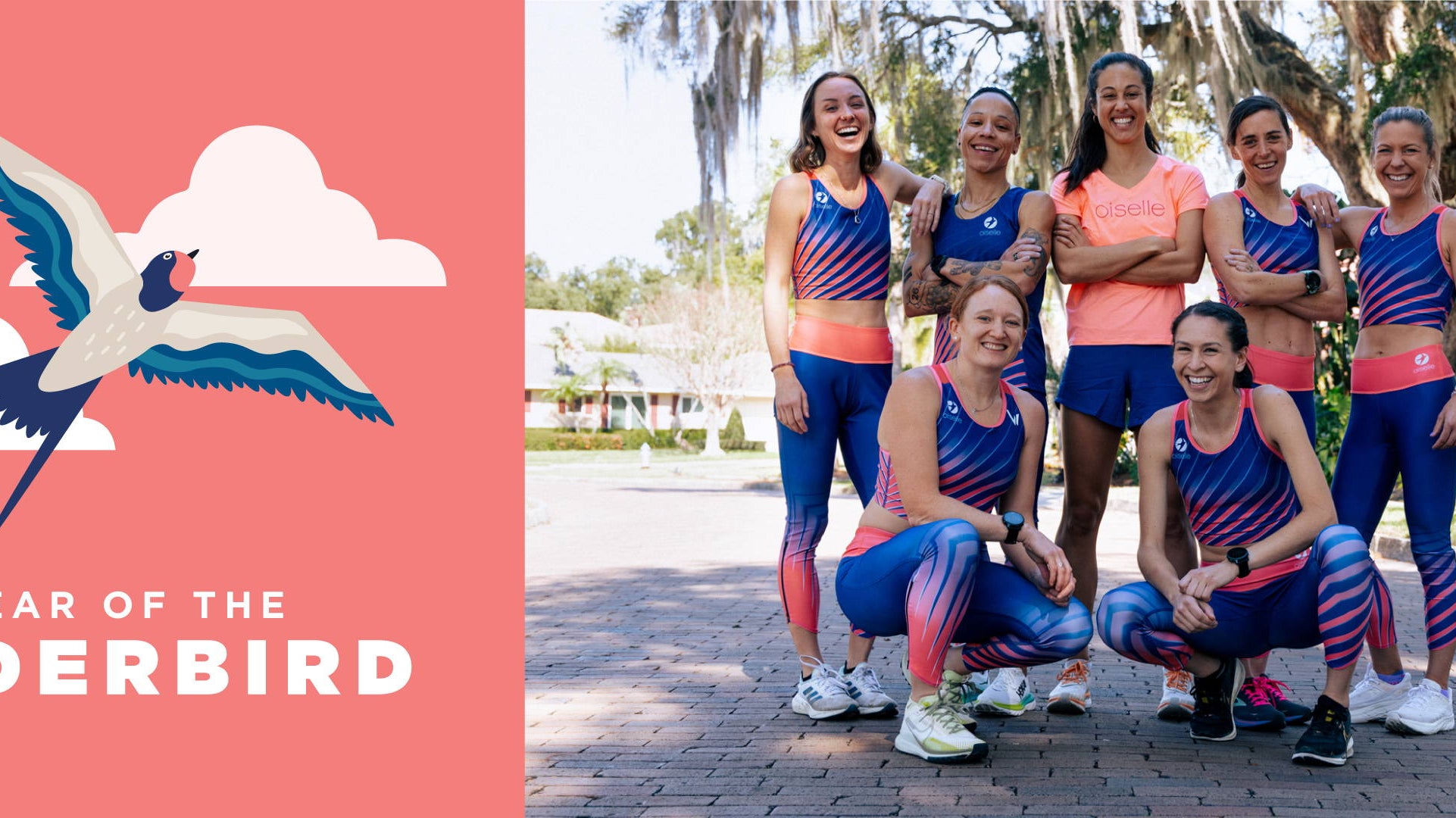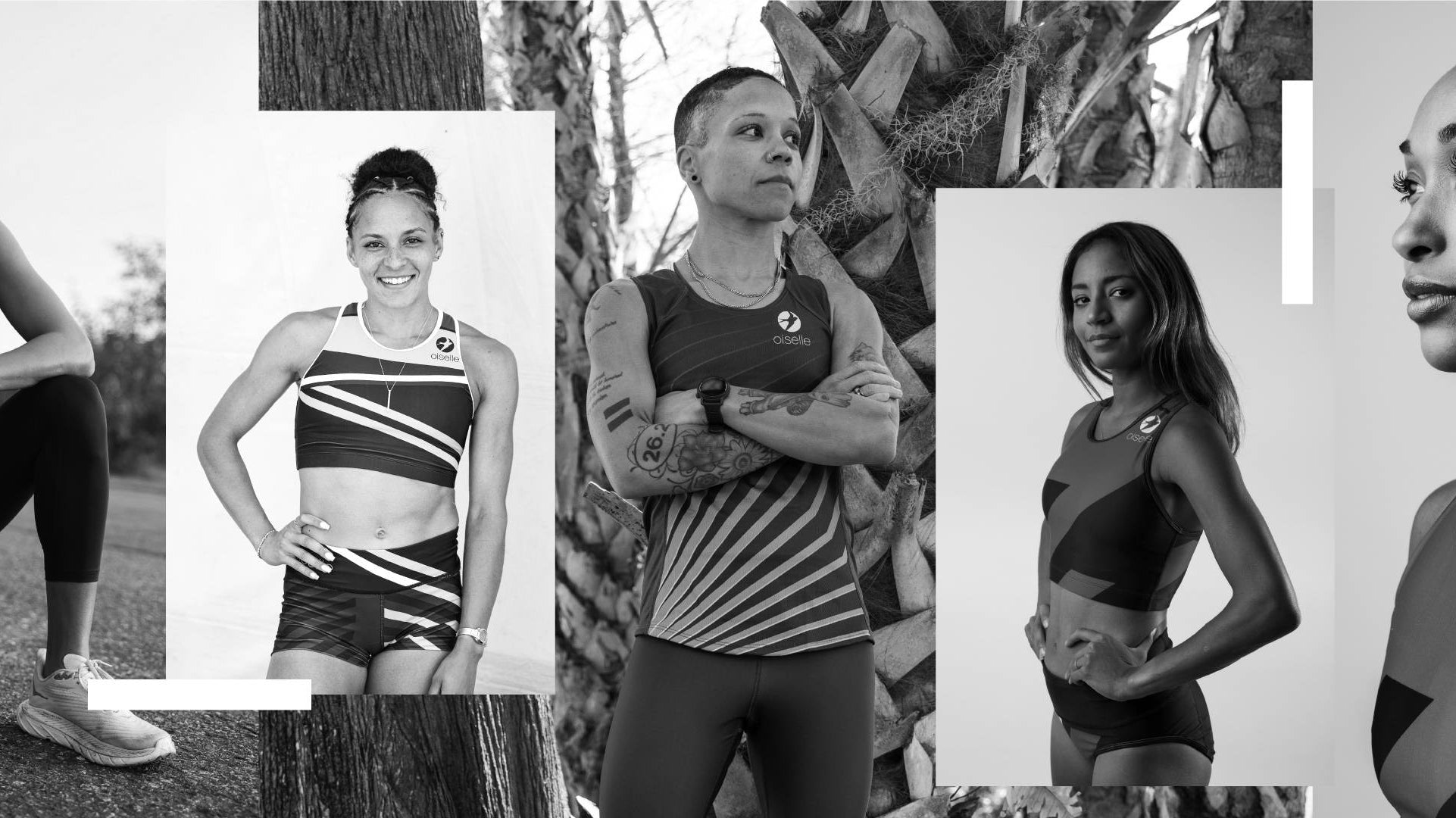We are so jazzed for all things bras! With the launch of the Queen and Sisters bras, we would like to highlight the design journey. Hear from lead designer Kami in conversation with our CEO and Founder, Sally:
Sally: Kami! I’m so glad we get to talk bras. Bra talk. It’s something we’ve been doing for years, but now with the launch of our new band/cup bras, we get to share the journey. I thought I’d start by asking you what your first sports bra experience was like.
Kami: Well, I’m a 36C. And, honestly, all the way until I worked at Oiselle, I wore store brand bras, like from Target. I would double up if I needed more support. But through this process, I also learned that I’m one who likes a little bit of movement. I don’t like being super compressed and held too tight. In fact, in fittings, I’m told I’m a 34D. But I often buy a 36C.
Kami: Even in the development of these bras, when we bought a bunch of different brands to test, I remember putting on one of the super structured bras and wearing it, and I was like, wow, I don’t move AT ALL. And I could see that if movement bothers you, that would be the bra to go for, but I didn’t like running in it. I like a combination of comfort and support, which for me means the ability to breathe and not feel trapped.
Sally: I’m glad you brought that up because I remember that was a big learning for us. When we dug into some of the breast movement research, including when Dr. Lesko went to the University of Portsmouth in the UK where they study breast movement, we were given that critical piece of data: that there is no hard and fast correlation between motion control and comfort. And that two women who are the exact same size might prefer completely different bras for running. Kind of mind-blowing!
Kami: Totally. And that’s one of the things I found most interesting during the development and working with our wear-testers, Beth and Katie. Beth is the type of runner who doesn’t like her breasts to move. And that’s what went into the development of the Sisters Bra. It was for the type of athlete who wants to have that locked down feeling. And then Katie on the other hand, said that originally, she thought she would prefer that locked down feeling -- but after wear testing, she preferred the Queen, which isn’t quite as rigid.
"There is no hard and fast correlation between motion control and comfort. And that two women who are the exact same size might prefer completely different bras for running."
Sally: When you said you are a 34D, but size up to a 36C for comfort, you touch on Sister Sizing. Can you explain how that works? It was a new concept for me when we started development.
Kami: I had heard about sister sizing in bra design before. Yes, when I was fit in a real bra, they said I was a 34D, but that I could also wear a 36C. At the time, I was being fitted for a strapless bra, and they recommended a 34D for tightness, to really hold things in place. But for sister sizing, here’s how it works: if you go down in your cup size, you go up a band size. Or the other way around. If you want a tighter band, you decrease your band size and increase your cup size.
Sally: Wasn't it surprising to learn that not all D cups are the same?
Kami: I know! The way you get fit for a bra, oddly it’s not super scientific. Because it’s all based on the way your body is shaped. It depends on your total circumference. How wide your rib cage is as well. If your rib cage is narrow vs. broader. Someone with a narrow rib cage but larger breasts could have the same total measurement around the body (at the widest part over the breasts) as someone with a larger rib cage, but then smaller breasts. But both those cup sizes could be a size D!
Sally: Tell me about the Sisters Bra and what your design intent was?
Kami: This design is all about the two layers system. First, for the inner layer, we needed to create enough room for the breasts to go into it. That’s called encapsulation. And then the outer layer, to hold everything in place. That’s called compression. And the two layers work together.
The key was really using different fabrics at each part to hold and support the breasts where they need to be. Breathability was also a huge factor. Using mesh panels to allow for heat and sweat to escape. Air circulation. And then the two-strap system. One of the things we heard, with a double strap system, is that the outer strap might be too tight on some people or too loose on others. So, we added the elastic adjustability on the outer straps so it can fit different body types. And this bra too, having the classic racerback provides the tighter hold.
Sally: Tell me more about the meshes. I found this super interesting… that not all meshes are created equal.
Kami: Yes, in the Sisters Bra, the mesh that’s used in the panels that are visible from the outside is our power mesh, and that one has 2-way stretch, but it’s tightly knit, so it has the structure to hold everything in place. But the interior mesh that’s used only has only 1-way stretch so that it creates zones that won’t stretch. That’s really important as it helps hold the breast tissue in place.
Sally: What about the cups? Is there anything special about these cups?
Kami: Yes, these are definitely created for sports. The cups are sewn in, padded, and perforated – which helps create breathability.
Sally: In your opinion, and based on what you’ve learned, is there a most important part of a sports bra?
Kami: There are actually two really important parts: first the chest band. That’s the base of the bra that creates the structure. The special chest band elastic has vertical ribbing that helps pull sweat through, so it doesn’t stay on your body and create chafing. The other thing that’s really important is the shoulder straps. With the straps, you want cushioning for comfort, but here again, you don’t want too much stretch, which can cause everything to bounce.
Sally: Tell me about the Queen Bra!
Kami: This is more of a classic design. Some of the feedback we received from our research is that it’s sometimes difficult to pull sports bras over the shoulders. So, we wanted to offer a fully open-back design. It’s easier to put on and provides simpler adjustability. This one has the option to be fully open. Also, you can wear them with straight straps, if that’s what the wearer wants, or crossed in the back – which offers more support.
Sally: I noticed that the chest band elastic on the Queen is wider, is there a reason?
Kami: Because it opens fully in the back, we wanted to add more structure in the base of the bra that pulls everything together. With the bigger back design of the Sisters, a wider elastic is not needed. But with the Queen, we increased the width of the chest band elastic and hook and eye closures to give it that structure.
Sally: One of the things that one notices, when the Queen Bra is hanging on the rack, is that it appears that the center front of the bra is slightly collapsed. Is that intentional?
Kami: Yes, it might look like it’s pulled in slightly. You want to have enough give in the outer layer so that once your breasts are in the bra, it gets pulled tight. If it was shaped exactly like your breasts on the hanger, it would be too loose on the body. Compared to the Sisters Bra, the Queen has a lot of the same elements that make the Sisters special, including the variety of meshes, the padded straps, the adjustability with the bird elastic, etc.
Sally: Back in 2018, when you and I got really serious about wanting to design band and cup-sized bras, we were lucky enough to be put in touch with bra designer Audrey Kirkland, someone our factory partner had worked with, and she helped us quite a bit. What was it like working with her?
Kami: Audrey was amazing. When she flew to Seattle to have our first sports bra summit, for one, she really brought the knowledge of pattern making into our bra development. They’re such structured garments, that the detail of pattern making that goes into each bra is like an art form. With bras, there’s not a single flat surface on it, and it’s a compact garment, so it was really important to learn the details of pattern making. That was huge.
Sally: Let's talk a little bit more about the wear testing process.
Kami: Our initial bras all came in 36C. I worked with Beth (34D) and Katie (40DD) who are both Oiselle staffers. That was fun because we were already running buddies. Also, because we had such different wants from a bra, in terms of motion control, we could provide diverse input. I got to hear directly from them about the bras. And every step we got closer to having their comfort, especially Katie, was monumental. We’d have the in person fit session, then moving into the actual running, and watching them run, and hearing what they think right then and there. Being able to make adjustments during our runs was so fantastic. Then, when they’re done running, I asked them questions. “Do you have any hot spots? Do you still feel compressed when you stop running? Do you want to rip it off your body?” Because we had such good relationships, they were able to give me that honest feedback right away.
Sally: So many how many prototypes did you develop?
Kami: Haha, I don’t know if I can count. It’s been years. And I’ve developed such a strong relationship with our factory partner. To get to the 36C, we probably had a dozen prototypes. And then once we graded them out, I think we did at least a half dozen prototypes. The thing with bra design, if you change one little thing, it could completely change something else. So you need to change one thing at a time.
Sally: And that’s crazy because with a lot of our styles that are more simple (say a top or pair of shorts), we might nail it in 1-2 prototypes. But honestly, I feel good about the fact that we didn’t rush it. Originally, we wanted to launch these styles in the Spring of 2020. But we also knew that it’s better to get it right, especially with our customers and community who are vocal in all the right ways, lol. Tell me honestly, did you ever feel like it was happening fast enough?
Kami: Lol, always. Maybe the entire process. Which was also a big learning thing for me… with bras. Oiselle moves fast, but hey, bras are different. They’re so engineered. It’s not a process that you can speed through. There are no short cuts. Just stay laser-focused on fit. In the end, it was a great lesson.
Sally: Aren’t you glad we made it??
Kami: Yes. Thankful. A little anxious too. I look forward to hearing the feedback. I know they’ll work for some, but not all. We have to just keep creating as many solutions as possible.
"We have to just keep creating as many solutions as possible."
Sally: What are your thoughts on the size range beyond the launch?
Kami: I’m excited for us to continue to expand. I guess this will be a call out to women who are outside the range we have now to send in what they’re looking for, so we can start moving in that direction. And also, more than just expanding our sizes, I hope we expand more designs as well. Getting feedback from women who are in this size range, who they don’t work for, we love getting feedback so that we can iterate. Every season is a new opportunity to do that.
Sally: To finish, there’s another secret bra coming out soon. Should we even talk about it? Let’s just hint. It’s called the Esther Bra.
Kami: The Esther Bra was designed for larger chested women but with a different cup where the liner fabric is molded to provide more room for the breasts, but with less structure than Queen and Sisters. It’s going to be a good running bra for C and D cups, depending on personal preference. I’m excited to see that one out in the world too!
Sally: Okay, Kami! Thank you for your time, and for helping me capture the magic of this process. Your dedication to getting these bras right, and to the finish line, has been so inspiring to be a part of. Let’s keep flying in our quest to support as many women as possible!
Kami: Yes! Let’s do it!










